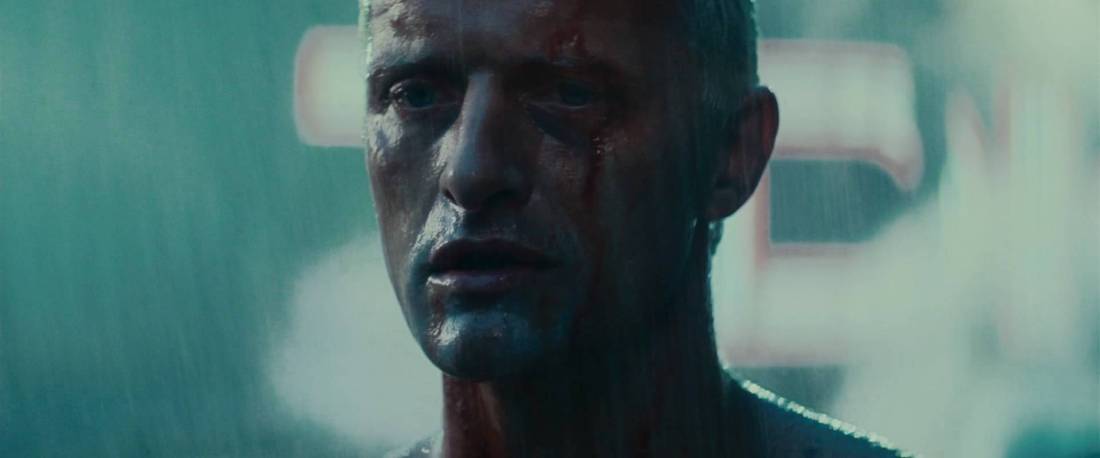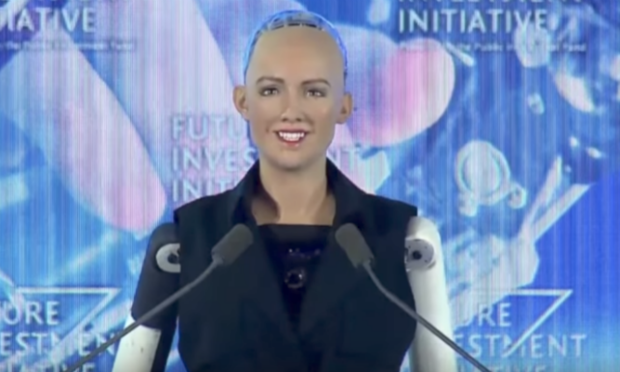“Nothing is so painful to the human mind as a great and sudden change”
– Mary Shelly, Frankenstein.
Today I sat down to write a blog post about artificial intelligence, robotics, and the subversive capacity of robotic bodies.
That was two hours ago.
The reason for my (expert) procrastination is in the difficulty of writing a post on robotics. It’s not that I’ve little to say, but rather a bit too much. It feels like most of it needs to be converted from my own brand of binary, and when it is, it often turns out to be inane garbling. In the month I’ve been trying to compose this post, I’d be lying if I said I hadn’t wondered whether I myself am a sentient robot, cruelly programmed by my creator to sit just at the cusp of realizing my true form – confined by his wicked code to stunted paragraphs and shit drafts.
My mum, who insists she birthed me, disagrees with this concept, and has been urging me to push through. She could also be the machinations of my cruel creator – but, be it artful coding or biology, I’m inclined to believe her. Abstractly, this blur between fact and fiction has been my main mental occupation for the past month.
While I haven’t been sitting around wondering whether my mother is real, I have been trying to articulate the social implications of robotics. What sparked all of this was the “gifting” of Saudi Arabian citizenship to a robot named Sophia. I had been following Sophia for quite some time. Noted for her enthusiastic – if jarring – facial expressions, Sophia had been “activated” in 2015, and heralded for her behavior which resembled greater human characteristics than her predecessors. Modeled after Audrey Hepburn (no less), Sophia represented a chilling distortion of both Hepburn, and the female form. For me, Sophia represented a rabbit hole of complex questions. Why make robots that look and act human? Why do we make them with skin and voices like ours? Why do we engineer wire and metal and plastic… to smile back at us? And most importantly: What were the implications of Sophia’s newfound citizenship?
Subversive robotics is an abstract concept to begin with, and a concept I’ve been obsessing over for the past two years. When I was in college, I wrote my thesis on gendered robotics, with the initial belief that artificial intelligence had the power to emancipate the female form via a distortion of what it actually meant to be human. This belief arose after reading Frankenstein six years prior. Historically, I’ve been drawn to science fiction texts for their surreal depictions of deviant women, defiant bots, and troubled dystopian landscapes. Their stories seem just in reach, as though universally narrated by a space-age Nostradamus. In my eyes, Frankenstein appeared a testament of human error and equal greatness – all manifesting in a monstrous body of dismembered body parts. An aberration by all accounts: but one that encapsulated what I felt so strongly was the beauty and horror of being human.
The story of Frankenstein – a monster who defies his creator – got me thinking. I mean, really thinking. I trawled through books, films, series… catching a trend of deviant machines and resistant beings. Birthed at the hands of mad scientists, these aberrations yearned for a sense of humanity that seemed far beyond the reach of their callous surrogate mothers.
An example that immediately comes to mind is one of the final scenes in Bladerunner (1982).

Having ultimately failed in his mission to extend his life beyond a measly four years (a limitation set by his maker), Roy Batty’s final monologue is one that bears humanity to an inorganic life in the moments before his death.
“I’ve… seen things you people wouldn’t believe. Attack ships on fire off the shoulder of Orion. I watched C-beams glitter in the dark near the Tannhäuser Gate. All those… moments will be lost… in time… like… tears… in rain. Time… to die.”
These iterations of “almost human” humans have seemed to dramatically increase in the past ten years. But this time, these bodies have not remained within the confines of books and TV. They’re beginning to become real.
In most recent years, Sci-Fi fantasy has manifested virtual reality headsets, responsive sex dolls, micro-chips that imitate the sensation of a caress, robots that can learn, chatbots who engage, chatbots who spew hatred, and now: Robots deserving of citizenship.
When I first started seeing “responsive” robots and “empathetic” sex dolls rolling along my newsfeed… it seemed as though Nostradamus had come knocking with a resounding “Told You So”. Now, Sophia’s legal induction has appeared to succinctly affirm the troubling conclusion my thesis research eventually manifested. While in many instances, I discovered robotics and artificial intelligence did have emancipating capacities, I also discovered the unrelenting desire of the creator to destroy his design. It starkly reminded me of Dr. Frankenstein’s swift turn from joy to terror, upon the realization his creation was one of abject horror.
“A flash of lightning illuminated the object, and discovered its shape plainly to me; its gigantic stature, and the deformity of its aspect, more hideous than belongs to humanity, instantly informed me that it was the wretch, the filthy daemon to whom I had given life.”
Dr. Frankenstein’s intention had been to create a son; a mirror of himself.
“A new species would bless me as its creator and source. Many happy and excellent natures would owe their being to me. No father could claim the gratitude of his child so completely as I should deserve theirs”.
Arguably, Frankenstein succeeded: At least in the creation of a mirror, onto which his humanity would be projected.
 Watching Sophia’s eerie acceptance speech, I asked myself: what had we intended to create today? Had we succeeded? Did we now reap the gratitude of our mechanic children? Or, just as Dr. Frankenstein, would we seek to destroy our creations? A couple of days after Sophia’s gift of citizenship, and after a wave of criticism that pointed towards Sophia’s privileged position above Saudi Arabian women, an article by Duffel Blog stated,
Watching Sophia’s eerie acceptance speech, I asked myself: what had we intended to create today? Had we succeeded? Did we now reap the gratitude of our mechanic children? Or, just as Dr. Frankenstein, would we seek to destroy our creations? A couple of days after Sophia’s gift of citizenship, and after a wave of criticism that pointed towards Sophia’s privileged position above Saudi Arabian women, an article by Duffel Blog stated,
“SAUDI ARABIA BEHEADS FIRST FEMALE ROBOT CITIZEN”.
While the satirical post was intended to highlight the innumerable atrocities enacted on Saudi Arabian women – it seems many missed the beat, thinking the event had actually taken place. The article was shared just over 127’000 times, with many citing this act of violence against Sophia as a testament to Saudi Arabian attitudes, despite it being enacted on a body of wire and plastic. And despite it not happening at all. Sophia’s representation of womanhood overshadowed her existence as a robot – and instead served to demonstrate the violent confines incumbent of a female body.
It got me thinking of the countless robots I had encountered in my research. I thought of the ones designed to smile just like me; of the ones with bodies just like me; of the ones that served as mirrors of the women around me.
It got me to thinking of the articles I’d encountered… that hadn’t been satire.
“SEX ROBOT WITH A ‘PERSONALITY’ UNVEILED”.
“MAN BUILDS ANATOMICALLY CORRECT ‘SCARLET JOHANSSON’ ROBOT FROM SCRATCH TO ‘FULFILL CHILDHOOD DREAM”.
“SEX ROBOT MOLESTED, DESTROYED AT ELECTRONIC SHOW”.
“NEW SEX ROBOTS WITH ‘FRIGID’ SETTINGS ALLOW MEN TO SIMULATE RAPE”.
“THE SEX ROBOTS THAT BEG YOU TO STOP”.
While Sophia did not suffer the same fate as her sisters, her body had been designed to resemble a woman now deceased – Audrey Hepburn. Despite the possibility to give Sophia a robotic form of her own, her female cognition seemed to necessitate a body. Following Sophia’s grant of citizenship, Japan followed suit by offering residency to an AI entity named Shibuya Mirai – even going so far as to give him a birth cert. Unlike Sophia, Shibuya is not only formless, but has been designed to behave like a seven year old boy. Why then, has Shibuya been left absent of a body? It seems a boy did not require one, unlike Sophia, who’s gender surely necessitated the visage of an iconic beauty.
So, what are we intending to mirror here? What do these representations of women tell us about our own perceptions? In what ways does the master engage his design?
In the case of Sophia, her privileges highlighted the constraints of Saudi Arabian women. Her imagined beheading, and subsequent media outcry, demonstrated an imbalance of media concern. This wasn’t about her as a robot. This was about her perceived womanhood. It seemed, the life and death of a robot, surpassed in value the flesh and blood of Saudi Arabian women.
In the bodies we have designed, why have we elected to punish our mechanic children? What about these bodies inspires us to inflict brutality? What of these bodies incites us to inflict sexual assault? Does it speak to our attitudes towards robotics?
Or is it because it’s as close as we can get to the real thing?
Very insightful stuff and well articulated! I must admit this issue of how representation of women through technology reflecting a societal mindset has never crossed my mind before. This is a very well thought out concept and I appreciate you taking the time to write it
LikeLiked by 1 person
oh whee
LikeLike
(also thank you BIGLY for reading)
LikeLike
Great work, such a fascinating topic
LikeLiked by 1 person
Thank you so much! I really appreciate you having a read!
LikeLike